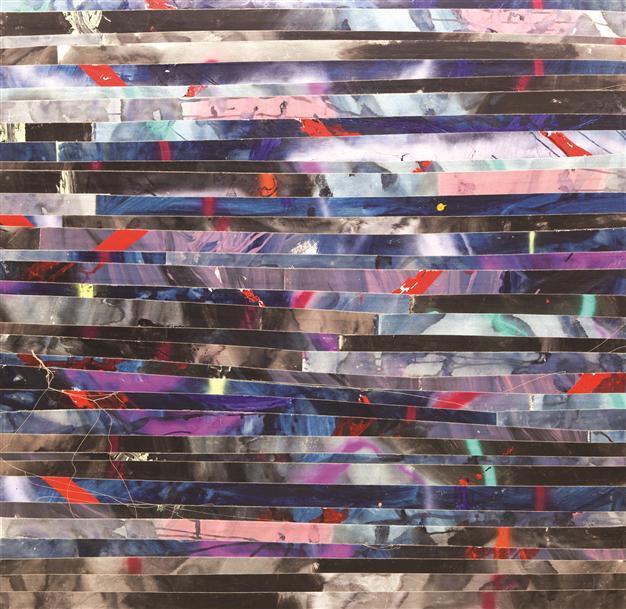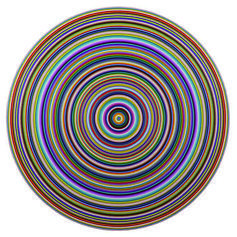Istanbul art scene and artists in focus in Switzerland
ISTANBUL

Museum Haus Konstruktiv has set itself the goal of bringing Istanbul’s vitality to Zurich, focusing on Turkish art history from the 1940s onward, as well as on contemporary Turkish art, by means of selected examples.
HOT SPOT ISTANBUL at Museum Haus Konstruktiv is the first comprehensive exhibition of Turkish abstract, concrete and conceptual art in Switzerland, with works from over 60 years. The project’s starting point is the development of Turkish abstract-concrete painting since the end of the 1940s and the impact that it has had on a young generation of artists who are active all around the world in a broad network.For some years, a very special, energetic and inspiring art scene has been establishing itself in Turkey, especially in Istanbul. This divided city on the Bosporus generates a productive atmosphere for creative forces, as new stimuli emerge between tradition and innovation. This is drawing an ever-increasing number of young artists to Istanbul from other Turkish cities. New galleries are appearing and new art spaces can be discovered everywhere. Istanbul is the place where a lot of what brings the present in its wake today just seems to happen in a highly condensed manner.
Hot spot Istanbul!
Museum Haus Konstruktiv has set itself the goal of bringing Istanbul’s vitality to Zurich, focusing on Turkish art history from the 1940s onward, as well as on contemporary Turkish art, by means of selected examples. This latest exhibition project is based on close cooperation with the participating artists, as well as with collections and private individuals who provided the museum with substantial support during realization. HOT SPOT ISTANBUL is shown on four floors and subdivided into five sections. In group projects and solo exhibitions, it presents paintings, drawings, sculptures, videos, installations and environments, while addressing the subtle gray areas between abstract, concrete and conceptual art, as have developed over the past decades and up to the present day. The earliest painting is by Fahrelnissa Zeid from the year 1947, and the most recent works were conceived directly for the exhibition – by Renée Levi, Ebru Uygun, Arslan Sükan, Ekrem Yalçındağ and Can Altay.
Works by pioneers of post-1945 Turkish abstract art can also be seen, including present artists from the “middle generation,” who left Turkey long ago, or who live in two places. Works by internationally networked minimalists are shown, as well as by quite young artists who, like the pioneers, gather their impressions from everywhere.
What is Turkish art anyway? The curators have repeatedly asked themselves this question. One thing we agree on is that Turkish art today is just as heterogeneous as any other national attribution of art, and that it can nevertheless be illuminating to think about its roots. This is why the title does not focus on a country, but deliberately on a city that is a construct of its past and its present. A hot spot is a focal point, a hub.
 For the first floor, artist Can Altay, who lives in Istanbul, developed a walk-through room installation, in which works from the late 1940s onward can be seen, e.g. works by Adnan Çoker (*1927), Nejad Melih Devrim (1923–1995), Burhan Doğançay (1929-2013), Renée Levi (*1960), Abdurrahman Öztoprak (1927-2011), Ahmet Oran, Mübin Orhon provide a multifaceted and informative inventory. For years, Museum Haus Konstruktiv has occupied itself with a cross-generational dialog between artistic positions of the past and their continuation into the present. For this reason, the course is supplemented by six key works from the museum’s collection, works that can be described as the DNA of the museum, and that have contributed to the history of constructivist, concrete and conceptual art, or in other words the thematic realm where Museum Haus Konstruktiv is at home.
For the first floor, artist Can Altay, who lives in Istanbul, developed a walk-through room installation, in which works from the late 1940s onward can be seen, e.g. works by Adnan Çoker (*1927), Nejad Melih Devrim (1923–1995), Burhan Doğançay (1929-2013), Renée Levi (*1960), Abdurrahman Öztoprak (1927-2011), Ahmet Oran, Mübin Orhon provide a multifaceted and informative inventory. For years, Museum Haus Konstruktiv has occupied itself with a cross-generational dialog between artistic positions of the past and their continuation into the present. For this reason, the course is supplemented by six key works from the museum’s collection, works that can be described as the DNA of the museum, and that have contributed to the history of constructivist, concrete and conceptual art, or in other words the thematic realm where Museum Haus Konstruktiv is at home. The second floor presents Ekrem Yalçındağ, who studied art in Izmir and in Frankfurt. Today, Yalçındağ lives and works in Berlin and Istanbul. He develops his works in the two studios set up in these two locations, where his assistants paint according to precise specifications. Like in an apprenticeship, he meticulously teaches them his specifically developed painting technique and shows them how they can continually optimize it. Ekrem Yalçındağ is a conceptual artist and a real painter, in equal measure. As a conceptual artist, he does not consider it absolutely necessary that the “magic hand” of the artist is involved. For him, it is much more important that a work is accurately thought-out, and that the technique is faithfully implemented – only the two of these together produce the desired result.
Yalçındağ’s stringently conceived paintings emanate from an examination of flower blossoms. In a way, these provide a vocabulary of abstract forms that he has since used in many of his works as a basic structure or coordinate system for the subsequent application of paint.
Abstract concepts
In his large-format tondi, he draws inspiration from his environment: the color sequences of the ring structures are always based on specific color observations that the artist has made in everyday life. Yalçındağ finds them on packaging or on advertising posters, in cafes, in restaurants or on the street.
They are color constellations that spontaneously please him. He perceives these color combinations, takes note of them or photographs them and subsequently transfers them to his paintings.
In the large columned hall, the exhibitions presents artists who, in their works, address the connections (on the one hand) and the discrepancies (on the other hand) between intellectually abstract and aesthetically vivid concepts.
















